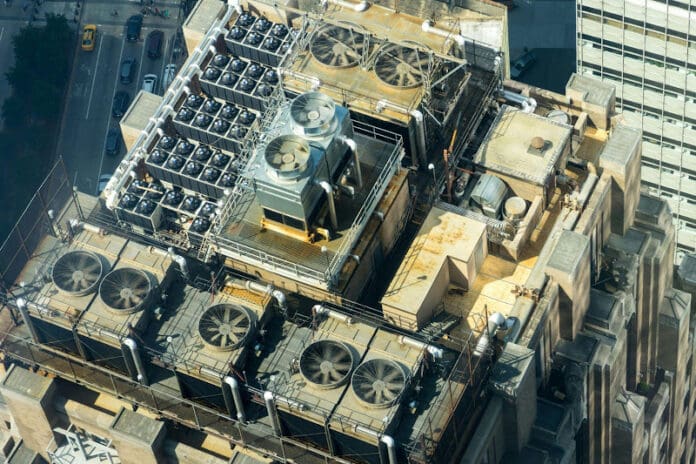Starting a commercial build from scratch is exciting, but it also comes with a long list of responsibilities. One of the most important is making sure the HVAC system is properly planned and installed. If you get it wrong, you could end up dealing with poor air quality, uneven temperatures, or high energy bills down the line. But don’t worry—it doesn’t have to be complicated. With the right checklist and a solid understanding of the basics, you’ll be able to set up your building for comfort, safety, and efficiency.
Here’s a breakdown of the HVAC essentials every new commercial space needs.
1. Ventilation Systems
Ventilation is the backbone of a healthy indoor environment. It helps remove stale air, manage humidity, and bring in fresh air from outside. For commercial spaces, you’ll likely need a mix of exhaust fans, supply fans, and circulation systems. These aren’t just optional add-ons—they’re key to meeting building codes and keeping indoor air clean and breathable.
When choosing ventilation equipment, it’s important to consider the size of the building, the number of people using it, and the type of business. A restaurant will have very different ventilation needs than a warehouse or office.
If you’re sourcing equipment, it helps to work with companies that specialize in commercial and industrial airflow solutions. Industrial Fans Direct is one such trusted supplier. They offer a wide range of products—from wall-mounted exhaust fans to explosion-proof units—designed specifically for demanding environments. With their variety and expert support, you can find fans that match your space and your airflow requirements.
2. Heating Units for All-Season Comfort
Depending on your location, you might need to plan for serious heating needs. For most commercial builds, heating systems can include electric heaters, natural gas units, or heat pumps. The right choice depends on your building’s layout, insulation, and how it will be used throughout the year.
For example, a large open warehouse may benefit from unit heaters or radiant heating, while office spaces might rely on central forced-air systems. Always check that your heating system is sized correctly for the space. An undersized unit won’t keep up in the winter, while an oversized one could waste energy.
Don’t forget to factor in ceiling height. Heat rises, so in tall buildings, you may need fans to push the warm air back down into the usable space.
3. Cooling Systems That Match Your Space
Cooling is just as important as heating—sometimes more so, depending on your climate. The key here is choosing a system that fits both your building’s layout and the type of work being done inside.
For example, retail spaces and offices often use rooftop units or split systems. Industrial sites might go with larger packaged systems or ductless mini-splits for targeted cooling. If you have special areas like server rooms, they’ll need their own dedicated cooling equipment.
Plan for insulation, sun exposure, and how many people will occupy each area. These factors can affect how much cooling power you need.
4. Thermostats and Smart Controls
A modern HVAC system should be easy to manage. That’s where smart thermostats and control systems come in. These tools let you monitor and adjust temperatures in real time, even from your phone or computer.
For multi-use buildings, zoning is a must. You can control different areas separately, which saves energy and improves comfort. For example, you might keep office areas cooler during the day while reducing usage in storage areas.
Smart controls also offer scheduling, alerts, and performance tracking. These features help you catch problems early and keep everything running efficiently.
5. Ductwork and Air Distribution
Even the best HVAC system won’t perform well if your ductwork is poorly designed. Ducts are responsible for carrying heated or cooled air throughout the building. If they’re too small, too long, or poorly insulated, you’ll lose airflow and energy.
When designing duct systems, plan for the layout of the building and the airflow needs of each space. Include dampers to control flow and grilles or diffusers for even distribution.
Make sure your ducts are sealed properly. Leaks can cause energy loss and throw off the balance of your system. Insulation also helps reduce energy use and keeps air at the right temperature.
6. Air Quality Equipment
Comfort isn’t just about temperature—it’s also about clean air. In many commercial spaces, you’ll need equipment to improve indoor air quality. This could include high-efficiency filters, air purifiers, or even UV germicidal systems.
Certain industries, like healthcare and food service, have strict requirements for air cleanliness. Even in regular office settings, better air quality can lead to improved productivity and fewer sick days.
You may also want to look into humidity control. Dehumidifiers or humidifiers can help maintain ideal moisture levels, which is especially helpful in seasonal climates.
7. Energy Recovery Systems
Energy recovery systems like ERVs (energy recovery ventilators) and HRVs (heat recovery ventilators) are great for buildings focused on energy efficiency. These systems work by exchanging stale indoor air with fresh outdoor air, but they also recover heat or coolness from the outgoing air.
This helps reduce the load on your heating and cooling equipment. It’s especially useful in buildings with limited natural ventilation or airtight construction. ERVs are a smart investment if you want to improve air quality without sacrificing efficiency.
8. Equipment for Specialized Spaces
Not all commercial buildings are the same. Some need special equipment based on the work they do. Commercial kitchens need high-powered exhaust hoods. Manufacturing facilities may require explosion-proof fans or high-volume air circulation. Labs and clean rooms might need HEPA filtration systems and strict environmental controls.
Think about your specific use case. Then, make sure your HVAC setup meets both safety standards and performance needs. Working with experienced suppliers and contractors can help you get it right the first time.
9. Backup Systems and Redundancy
Some businesses can’t afford any downtime. If that’s the case for you, consider backup systems for your HVAC equipment. This might include a second unit, emergency power generators, or battery backups for essential controls.
Redundancy is especially important for data centers, medical facilities, and any space where temperature control is critical to safety or operations. It may increase your upfront cost, but it offers peace of mind and business continuity.
Getting your HVAC setup right during the construction phase can save you money, time, and stress in the long run. Use this checklist to cover all the essential components. Think about your building’s layout, how it will be used, and any special equipment or needs. Most of all, work with suppliers and contractors who understand commercial systems. With the right team and a solid plan, your building will be comfortable, efficient, and ready for anything.







